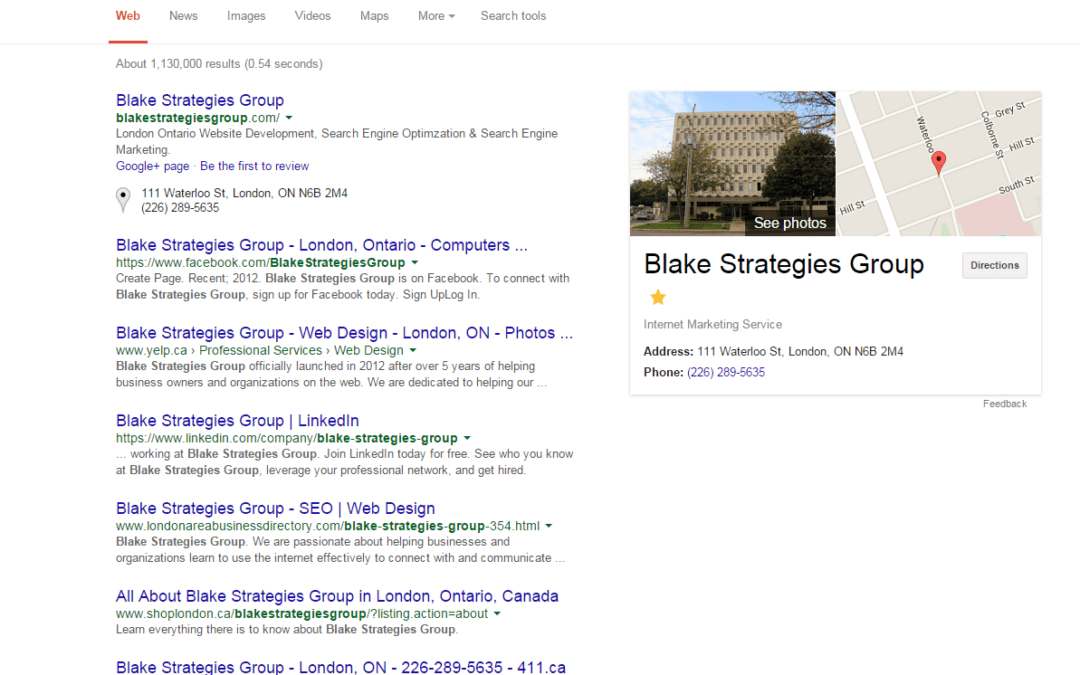
Mastering Your Digital Footprint: A Comprehensive Guide to Online Presence
In today’s digital age, your business’s online presence is not just an asset—it’s a necessity. When potential customers search for your company or services, the digital trail you leave behind, often referred to as your digital footprint, can make or break their decision to engage with you.
This footprint encompasses every listing, profile, and piece of content associated with your business that you can control or influence. A robust digital footprint establishes credibility, builds trust, and amplifies your reach, ensuring that your business stands out in a crowded online marketplace.
This article explores the concept of a digital footprint, why it matters for businesses, and how to strategically build and manage it to dominate search engine results. By the end, you’ll have a clear roadmap to enhance your online presence and attract more customers.
What Is a Digital Footprint?
Your digital footprint is the collection of online content associated with your business that appears when someone searches for your company name or related keywords. Think of it as a virtual pathway that leads potential customers directly to your business. This pathway includes your website, social media profiles, business directory listings, review platforms, and any other online platforms where your business has a presence.
When customers search for your business, they typically fall into one of two categories:
- Discovery Searchers: These are people who don’t know your business but are searching for products or services you offer. They use broad keywords like “SEO company” or “local bakery near me.”
- Direct Searchers: These individuals already know your business name, perhaps through a referral or advertisement, and search for it specifically, such as “Jonathon Hyjek SEO Services.”
While search engine optimization (SEO) is critical for capturing discovery searchers, building a strong digital footprint is equally important for direct searchers. A well-crafted digital footprint ensures that when someone searches for your business name, they find a wealth of credible, consistent, and professional information about you.
Why Your Digital Footprint Matters
A strong digital footprint serves multiple purposes, each contributing to your business’s success:
1. Establishes Credibility and Trust
When potential customers search for your business and find a well-maintained website followed by active profiles on LinkedIn, Yelp, Google Business Profile, and other platforms, it signals that your business is legitimate and engaged. A sparse or inconsistent online presence, on the other hand, can raise doubts about your reliability.
2. Amplifies Your Reach
By occupying multiple spots on the first page or two of search engine results, you increase the likelihood that searchers will interact with your business. Even if they don’t click on your website immediately, they may visit your LinkedIn page, read Yelp reviews, or explore your social media, all of which can lead them back to you.
3. Enhances SEO Performance
Many online profiles and directories allow you to include links to your website. These backlinks can improve your website’s authority in the eyes of search engines, boosting your organic rankings for both branded and non-branded keywords.
4. Shapes Your Narrative
A strong digital footprint lets you control the story told about your business. By creating and optimizing profiles, you can highlight your strengths, showcase customer testimonials, and address potential concerns before they arise.
Building Your Digital Footprint: A Step-by-Step Guide
Creating a comprehensive digital footprint requires strategy, consistency, and patience. Here’s how to get started:
Step 1: Secure Your Website as the Foundation
Your website is the cornerstone of your digital footprint. When someone searches for your business name, your website should ideally be the first result. To ensure this:
- Optimize for Your Brand: Include your business name in your website’s title tags, meta descriptions, and content. For example, “Jonathon Hyjek SEO Services – London, Ontario” is more effective than a generic “SEO Services.”
- Ensure Accessibility: Make sure your website is mobile-friendly, fast-loading, and easy to navigate.
- Claim Your Domain: Use a domain that matches your business name (e.g., jonathonhyjek.com) to reinforce brand consistency.
If your website isn’t ranking at the top for your business name, you may need to investigate technical SEO issues or competing listings, such as outdated directory profiles.
Step 2: Claim and Optimize Key Online Profiles
Beyond your website, create and optimize profiles on platforms that align with your industry and audience. These platforms fall into three main categories:
Social Media Platforms
- LinkedIn: Create a company page and a personal profile for key team members. Share industry insights, case studies, and company updates.
- Twitter/X: Use your business name as your handle and post regularly about your services, promotions, and industry news.
- Facebook: Build a business page with complete contact information, customer reviews, and engaging content like photos or videos.
- Instagram: Ideal for visually-driven businesses, such as restaurants or retailers. Share high-quality images and use hashtags to increase discoverability.
Business Directories
- Google Business Profile: Claim and verify your profile to appear in Google Maps and local search results. Include accurate business details, photos, and regular updates on your Google Business Profile.
- Yelp: Optimize your Yelp page with a detailed business description, photos, and prompt responses to customer reviews.
- Manta, Weblocal, and Yellow Pages: These directories are particularly valuable for local businesses. Ensure your NAP (Name, Address, Phone Number) is consistent across all platforms.
Industry-Specific Platforms
- Quora: Answer questions related to your industry to establish expertise and drive traffic to your website.
- Houzz or Angi: For home improvement businesses, these platforms are essential for showcasing projects and collecting reviews.
- TripAdvisor: Critical for hospitality businesses like hotels or restaurants.
When creating profiles, use consistent branding (logos, colors, and messaging) and include links to your website. Avoid creating profiles on low-quality or spammy directories, as they can harm your reputation.
Step 3: Create Valuable Content
Content is a powerful tool for expanding your digital footprint. By publishing blog posts, videos, or infographics, you can occupy more search engine real estate and engage potential customers. Consider:
- Blogging: Write articles on your website about topics relevant to your audience. For example, an SEO company could publish “Top 10 SEO Mistakes Businesses Make.”
- Guest Posting: Contribute articles to reputable industry blogs, including a link back to your website.
- Video Content: Create short videos for YouTube or TikTok that showcase your expertise or behind-the-scenes looks at your business.
Step 4: Manage Online Reviews
Reviews on platforms like Yelp, Google, and Facebook are a critical part of your digital footprint. Encourage satisfied customers to leave positive reviews and respond promptly to all reviews, positive or negative. A thoughtful response to a negative review can demonstrate your commitment to customer satisfaction.
Step 5: Monitor and Maintain Your Footprint
Building a digital footprint is not a one-time task. Regularly:
- Check for Accuracy: Ensure your business information is up-to-date across all platforms, especially after a rebrand or change in contact details.
- Monitor Search Results: Search for your business name periodically to see what appears. If undesirable results (e.g., outdated profiles) show up, take steps to suppress or remove them.
- Engage Actively: Post updates, respond to comments, and interact with followers to keep your profiles active and relevant.
Common Pitfalls to Avoid
While building your digital footprint, steer clear of these mistakes:
- Spamming Search Engines: Creating dozens of low-quality profiles in a short period can trigger search engine penalties. Build profiles gradually and focus on reputable platforms.
- Inconsistent Information: Discrepancies in your business name, address, or phone number can confuse customers and harm your SEO.
- Neglecting Maintenance: Outdated profiles or inactive social media accounts can make your business appear unprofessional.
Measuring the Impact of Your Digital Footprint
To gauge the effectiveness of your efforts, track key metrics:
- Search Engine Rankings: Use tools like Google Search Console to monitor where your website and profiles rank for your business name and related keywords.
- Website Traffic: Analyze referral traffic from social media, directories, and other profiles using Google Analytics.
- Customer Engagement: Monitor likes, comments, and shares on social media to assess audience interaction.
Final Thoughts
Mastering your digital footprint is an ongoing process that requires strategy and diligence. By securing a strong website, claiming key profiles, creating valuable content, and actively managing your online presence, you can dominate search engine results and build trust with potential customers. A well-crafted digital footprint not only makes your business appear larger and more credible but also ensures that customers can easily find and engage with you, no matter how they search.
Start today by auditing your current online presence and identifying gaps. With consistent effort, your digital footprint will become a powerful tool for driving growth and establishing your business as a leader in your industry.



